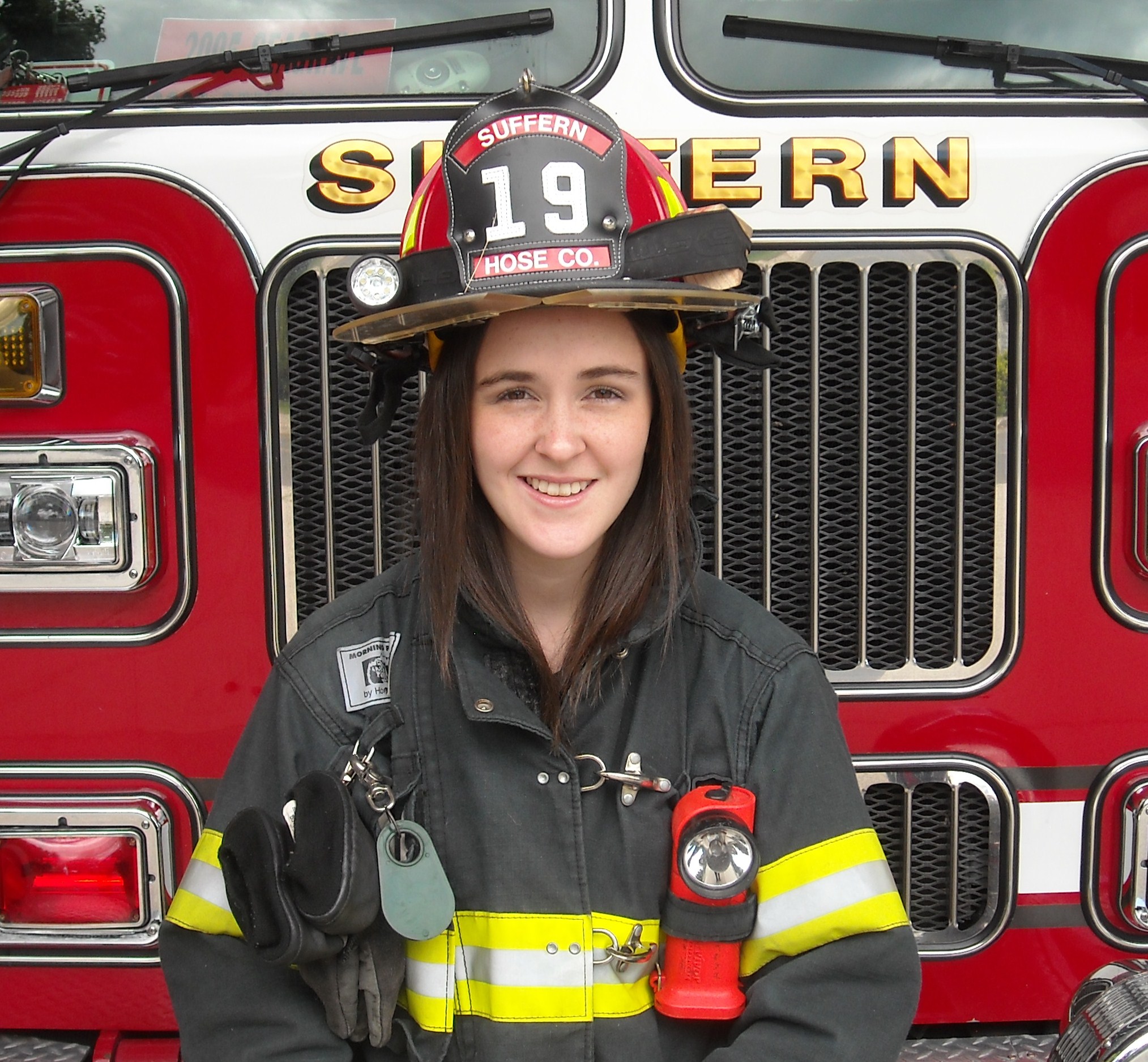 BY BARRY WARNER
BY BARRY WARNER
With temperatures expected to reach over 90 degrees this week, fighting fires seems even more heroic than usual!
Suffern volunteer firefighters respond to emergencies wearing very heavy equipment in thick, insulated suits that can raise a person’s body temperature above 100 degrees. Because of this, firefighters are at an increased risk of dehydration, heat and exhaustion.
One of the many volunteers in Rockland County who put their health and lives on the line to protect their community is Brianne Murphy of Suffern Hose Company #1.
Suffern Hose Co. #1 Captain Joe Bednarski told the Rockland County Times, “Brianne shows enthusiasm at every fire call and training event she attends. Brianne recently completed her rigorous studies to successfully become a Physician Assistant. Although she went to school out of the area, she made every effort to make as many fire calls, drills and any other fire department activity that she could. Brianne has served as secretary for the Hose Company for the majority of the last 8 years and has always been dedicated to her position. Whenever Brianne is presented with an obstacle, she always seeks new ideas and approaches to overcome the issue at hand.”
“Whenever the alarm sounds, I prepare myself, get geared up and listen to the officer regarding the type of fire we are going to extinguish. Our objectives are to save lives and property. The training drills at the Fire Training Center ‘burn building’ are treated as the real thing, as we get experience stretching the lines in a quick and timely manner. In case of a high-rise building, we train to carry up a high-rise pack and tool bag to connect to a standpipe in a stairwell. You never know what you are going to show up to, so I am always thinking in transit on the fire truck. If we are going to the scene of an auto accident, I can put my training to use as a Physician Assistant. Acquired Immune Deficiency Syndrome (AIDS) and Hepatitis B require serious concerns for firefighters exposed to blood and certain other body fluids that contain blood borne pathogens. We work together with Suffern Hook and Ladder as we each have separate responsibilities. The roles of Hook and Ladder are search and rescue plus roof ventilation, while the role of the Hose Company is to knock the fire down! During Hurricane Irene in 2011, we received call after call about pumping out water from basements. People lost many of their belongings, but they were very thankful that we were there to help them,” said Murphy.
The fire pumper, or engine, carries 500 gallons of water for a quick attack on a fire until a dedicated water supply can be established from a fire hydrant. The firefighters connect the hoses to the water source using various tools. They get the hoses into position by dragging, carrying or hoisting them into place. Training procedures include removing the right amount of hose from the Pumper, carrying the hose effectively on the shoulder or arm, flaking or stacking the hose line, staging enough hose at the entrance point of the structure, coupling the nozzle for the lead-line advance, knowing when to charge the line with water and donning personnel protective equipment (PPE), such as the mask, hood, helmet and gloves.
Stretching the hose to a fire is a team effort that requires coordination. For the hose line to be effective, it must be mobile, which means the crew must spread the length they need to advance. After the section of hose is advanced and the nozzleman is ready to open the nozzle, the backup members must move back into position to assist the nozzleman. The nozzle team checks that there is no hang-up of the hose and enters the door of the structure to extinguish the fire. Then one firefighter checks that all of the hose has been cleared from the hosebed, because the extra hose can kink where it is folded and cause a water restriction that could affect the fire attack. The pump operator ensures that any hose remaining in the hosebed is cleared before charging it with water. The first hose line should go between the fire and the victims. Usually the front door is the best route to achieve this position, and the hose line should protect the interior stairs from fire extension. Flow is the volume of water delivered through the hose lines to the burning material by means of the force of the fire pump. The horizontal and vertical reach of the fire stream expands as the pressure is increased. Heat, wind, building partitions and angle of the stream all have an impact on the stream’s reach. Nozzle pressure is the optimum pressure needed at the end of the hose line for the nozzle to produce an effective stream.
Brianne concluded, “I have been a firefighter for eight years and volunteer to help people. My father is an assistant chief and vice-president of the Hose Company. He joined the Company after 9/11 and encouraged me to become a firefighter. I enjoy the friendships I have made at Suffern Hose and we work well together during emergency operations at the fire scenes. To keep in shape, I do cardio exercises plus strength training and I am prepared to fight fires with my father!”
To obtain information about volunteering for the Suffern Hose Company #1 call 845-357-8841.

You must be logged in to post a comment Login